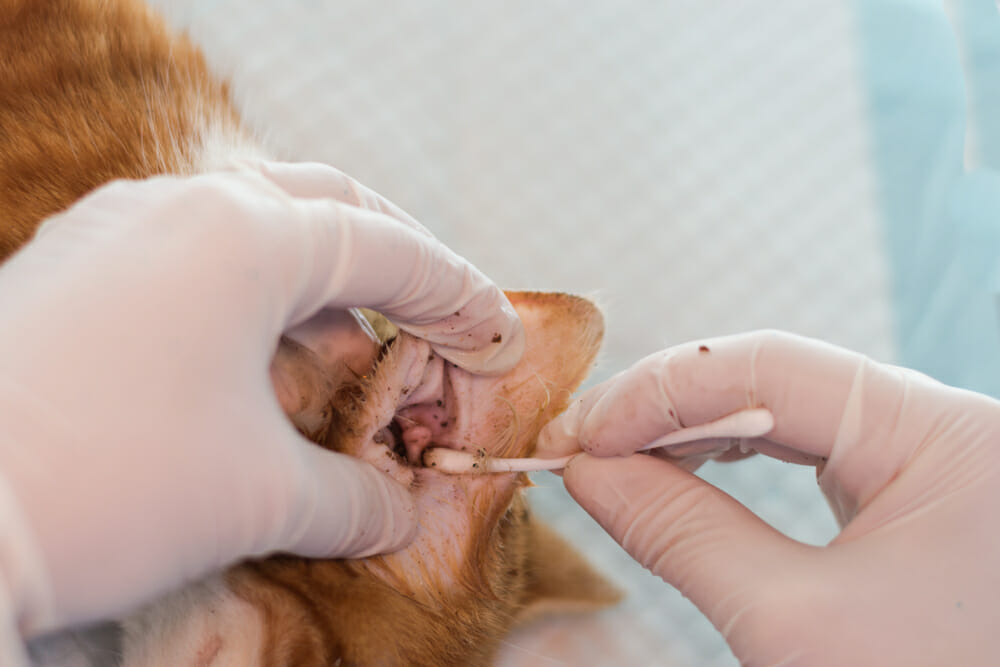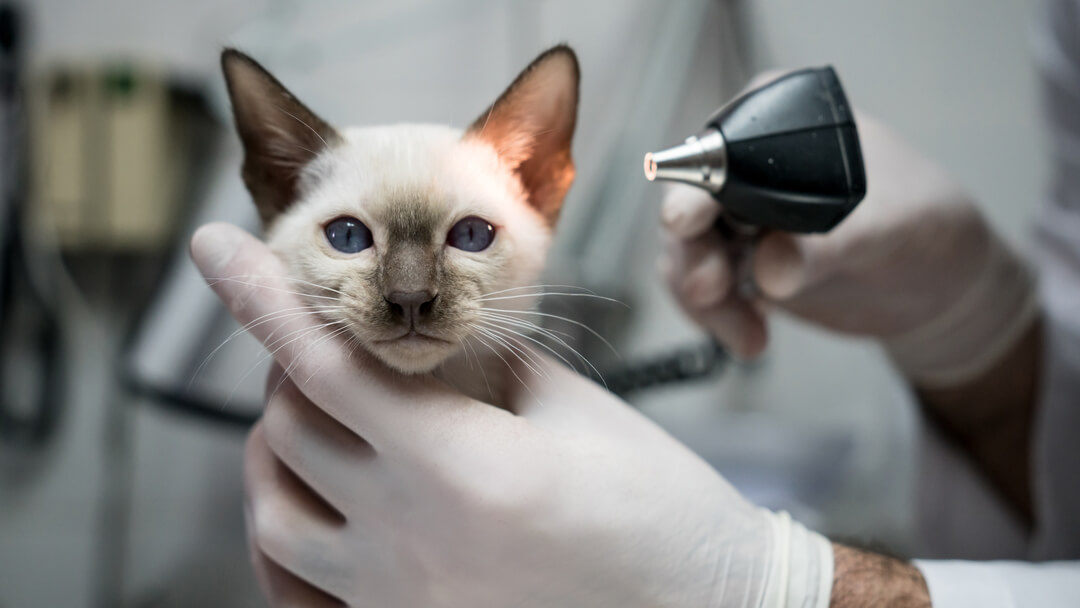Is your cat scratching her ears or shaking her head? Ear mites, a common parasite that resides on the surface of their skin, maybe the cause. Here’s how to see whether your cat has ear mites so you can treat them and prevent them from spreading.
Cats scratch their ears for a variety of reasons. It’s possible that ear mites are at blame when it’s more than simply daily itching. Your cat may initially show signs of this bug by tossing her head or pawing at her ears. It may also be that you detect clusters of black coffee-ground-like particles within your cat’s ears when stroking him. Gross! Find out what to do if those bothersome bugs are the source of your cat’s discomfort.

What are Ear Mites?
Otodectes cynotis, often known as otodectic mange, is the most prevalent ear mite that causes problems in cats. This parasite thrives in the wet, warm environment of a cat’s ear canal, where it feeds on skin cells, blood, and even earwax. (Didn’t we mention they were revolting?) Because these mites are infectious, an infestation in one cat may infect other cats and canines. Cats may scratch so much that they develop infections or perhaps permanently harm their ears if they get too numerous and bothersome.
Symptoms of Ear Mite in Cats
Cats’ behaviour, as well as signs in the ears, may indicate an ear mite infestation. Ear mite-infested cats may claw at their ears, shake their heads, or keep their heads tilted at an angle, almost as if they’re attempting to get rid of the parasites. On the outside and inside of the cat’s ears, waxy or crusty discharge that appears like coffee grinds may be seen.
According to Ernie Ward, DVM, a writer, podcaster, pet nutrition advocate, and veterinarian who works with cats at animal rescue organisations in North Carolina, those patches that appear like coffee grounds are an indication that the ear mites have been at work for a long.
Ward explains, “That’s the mites’ blood, feasting, pouring over.” “The cat has already endured a great deal of pain that has gone undetected.”
Ward imagines these bugs moving about in a cat’s ear, and the feeling of movement and itching never ceases, no matter how often the animal shakes, paws, or scratches.

What Causes Ear Mites in Cats?
Ear mites are prevalent among outdoor cats and are extremely infectious among animals, but not humans, fortunately. Eggs are deposited in the ear, and it takes about three weeks for them to develop into an adult mites, which may then reproduce and spread the infection. Mites aren’t only restricted to your cat’s ears; they may also stray and cause irritation elsewhere on the cat’s body.
What Should You Do If Your Cat Has Ear Mites?
Because ear mites are difficult to detect and may not be the sole cause of a cat’s ear irritation or damage, it’s best to get your cat examined by a veterinarian for a professional diagnosis.
Through a microscope or a magnification scope, your veterinarian will search for the hard-to-see tiny white creatures that veterinarians and doctors employ to examine inside ears. A sample of ear mites may also be identified by putting it on a dark, well-lit backdrop and looking for moving white specks using a magnifying lens.

Ear Mites in Cats and How to Treat Them
If your cat’s itching ears are caused by ear mites, there are many options for getting rid of these pesky insects. Some modern parasite-killing medicines available from veterinarians are the quickest and most successful, with some of them clearing ear mite infestations in a single dosage.
All ear mite treatments for cats begin with a thorough cleaning of the ears. Once the ear is free of wax, crusty discharge, and other debris, medicine may be used one time or on a regular basis to eliminate the infestation and prevent it from recurring.
If your cat’s scratching at her ears has caused damage or inflammation in the ear, your veterinarian may prescribe additional medications to reduce swelling and combat infections caused by the scratching.

Do Homeopathic Treatments Help with Ear Mites?
Ward admits that certain holistic, at-home therapies are available on the internet. However, in his experience, household products that are intended to suffocate ear mites, such as coconut oil, olive oil, and almond oil, are useless. Although it may seem to be a fast cure to assist your cat, these oils may not be able to kill all of the eggs, as well as all of the ear mites, which may live in air pockets in the ear. Because a single surviving female ear mite with eggs may restart the infestation, using them will only make your cat’s misery worse.
How to Prevent Ear Mite Recurrence
Your veterinarian may also suggest a parasite preventative to help keep the bugs away for next time and make sure any additional ear-mite hitchhikers have been taken care of to ensure there are no ear mites hanging around in kitty’s hair. Your veterinarian may want to visit your cat for a checkup in a week or two after prescribing your cat’s particular treatment plan to ensure that all the bugs are gone for good.


















